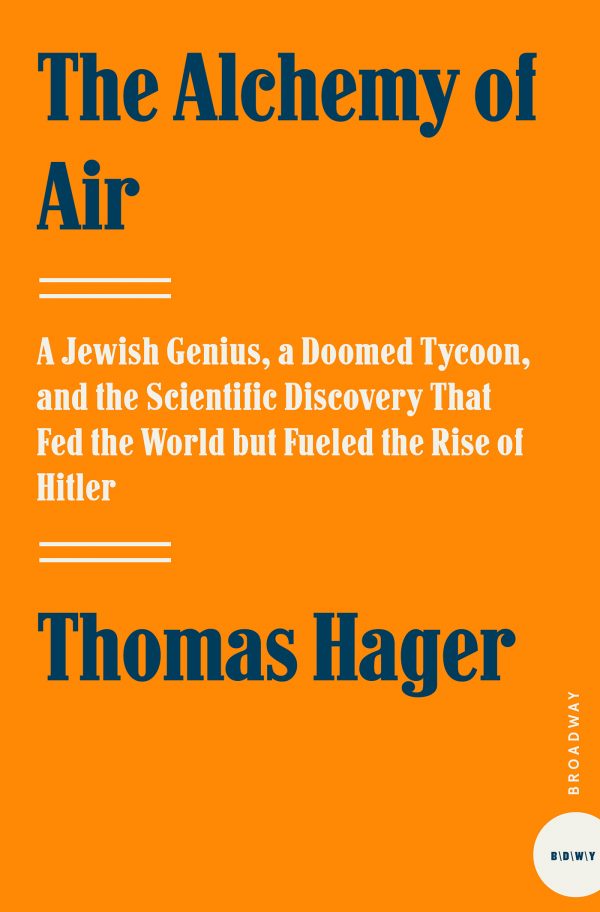James Larminie, Andrew Dicks9780470848579, 0-470-84857-X
Table of contents :
Front Matter……Page 1
Preface……Page 3
Foreword to the First Edition……Page 5
Acknowledgements……Page 7
Abbreviations……Page 9
Symbols……Page 11
Table of Contents……Page 0
Table of Contents……Page 13
1.1 Hydrogen Fuel Cells – Basic Principles……Page 22
1.2 What Limits the Current?……Page 26
1.3 Connecting Cells in Series – the Bipolar Plate……Page 27
1.4 Gas Supply and Cooling……Page 31
1.5 Fuel Cell Types……Page 35
1.6 Other Cells – Some Fuel Cells, Some Not……Page 37
1.6.2 Metal/Air Cells……Page 38
1.6.3 Redox Flow Cells or Regenerative Fuel Cells……Page 39
1.7 Other Parts of a Fuel Cell System……Page 40
1.8 Figures Used to Compare Systems……Page 42
1.9 Advantages and Applications……Page 43
References……Page 45
2.1 Energy and the EMF of the Hydrogen Fuel Cell……Page 46
2.2 The Open Circuit Voltage of Other Fuel Cells and Batteries……Page 51
2.3 Efficiency and Efficiency Limits……Page 52
2.4 Efficiency and the Fuel Cell Voltage……Page 55
2.5.1 The Nernst Equation……Page 56
2.5.2 Hydrogen Partial Pressure……Page 59
2.5.3 Fuel and Oxidant Utilization……Page 60
2.5.4 System Pressure……Page 61
2.5.5 An Application – Blood Alcohol Measurement……Page 62
2.6 Summary……Page 63
References……Page 64
3.1 Introduction……Page 65
3.3 Fuel Cell Irreversibilities – Causes of Voltage Drop……Page 67
3.4.1 The Tafel Equation……Page 68
3.4.2 The Constants in the Tafel Equation……Page 69
3.4.3 Reducing the Activation Overvoltage……Page 72
3.5 Fuel Crossover and Internal Currents……Page 73
3.6 Ohmic Losses……Page 76
3.7 Mass Transport or Concentration Losses……Page 77
3.8 Combining the Irreversibilities……Page 79
3.9 The Charge Double Layer……Page 81
3.10 Distinguishing the Different Irreversibilities……Page 83
References……Page 86
4.1 Overview……Page 87
4.2 How the Polymer Electrolyte Works……Page 89
4.3 Electrodes and Electrode Structure……Page 92
4.4.1 Overview of the Problem……Page 95
4.4.2 Airflow and Water Evaporation……Page 96
4.4.3 Humidity of PEMFC Air……Page 100
4.4.4 Running PEM Fuel Cells without Extra Humidification……Page 103
4.4.5 External Humidification – Principles……Page 105
4.4.6 External Humidification – Methods……Page 107
4.5.1 Cooling Using the Cathode Air Supply……Page 110
4.5.2 Separate Reactant and Cooling Air……Page 111
4.5.3 Water Cooling of PEM Fuel Cells……Page 113
4.6.2 Flow Field Patterns on the Bipolar Plates……Page 114
4.6.3 Making Bipolar Plates for PEM Fuel Cells……Page 116
4.6.4 Other Topologies……Page 120
4.7.1 Outline of the Problem……Page 122
4.7.2 Simple Quantitative Cost/Benefit Analysis of Higher Operating Pressures……Page 123
4.7.3 Other Factors Affecting Choice of Pressure……Page 128
4.8.1 Carbon Monoxide Poisoning……Page 130
4.8.3 Using Pure Oxygen in Place of Air……Page 131
4.9.1 Small 12-W System……Page 132
4.9.2 Medium 2-kW System……Page 134
4.9.3 205-kW Fuel Cell Engine……Page 137
References……Page 138
5.1.2 Historical Importance……Page 140
5.1.3 Main Advantages……Page 141
5.2.1 Mobile Electrolyte……Page 143
5.2.2 Static Electrolyte Alkaline Fuel Cells……Page 146
5.2.3 Dissolved Fuel Alkaline Fuel Cells……Page 148
5.3 Operating Pressure and Temperature……Page 151
5.4.2 Sintered Nickel Powder……Page 153
5.4.4 Rolled Electrodes……Page 154
5.6 Problems and Development……Page 156
References……Page 157
6.1 Introduction……Page 159
6.2.1 Overall DMFC Reaction……Page 161
6.2.3 Anode Reactions in the PEM Direct Methanol FC……Page 162
6.2.4 Anode Fuel Feed……Page 164
6.2.5 Anode Catalysts……Page 165
6.3.1 How Fuel Crossover Occurs……Page 166
6.3.2 Standard Techniques for Reducing Fuel Crossover……Page 167
6.3.3 Fuel Crossover Techniques in Development……Page 168
6.4 Cathode Reactions and Catalysts……Page 169
6.5.1 Methanol Production……Page 170
6.5.2 Methanol Safety……Page 171
6.5.3 Methanol Compared to Ethanol……Page 173
6.5.4 Methanol Storage……Page 174
6.6 Direct Methanol Fuel Cell Applications……Page 175
References……Page 178
7.1 Introduction……Page 180
7.2.1 An Introduction to Fuel Reforming……Page 182
7.2.2 Fuel Utilization……Page 183
7.2.3 Bottoming Cycles……Page 185
7.2.4 The Use of Heat Exchangers – Exergy and Pinch Technology……Page 191
7.3.1 How It Works……Page 194
7.3.2 Performance of the PAFC……Page 199
7.3.3 Recent Developments in PAFC……Page 201
7.4.1 How It Works……Page 204
7.4.3 Cell Components in the MCFC……Page 207
7.4.4 Stack Configuration and Sealing……Page 212
7.4.5 Internal Reforming……Page 213
7.4.6 Performance of MCFCS……Page 215
7.4.7 Practical MCFC Systems……Page 219
7.5.1 How It Works……Page 224
7.5.2 SOFC Components……Page 226
7.5.3 Practical Design and Stacking Arrangements for the SOFC……Page 230
7.5.4 SOFC Performance……Page 237
7.5.5 SOFC Combined Cycles, Novel System Designs and Hybrid Systems……Page 238
7.5.6 Intermediate Temperature SOFCs……Page 242
References……Page 243
8.1 Introduction……Page 246
8.2.1 Petroleum……Page 249
8.2.2 Petroleum in Mixtures: Tar Sands, Oil Shales, Gas Hydrates, and LPG……Page 250
8.2.3 Coal and Coal Gases……Page 251
8.2.4 Natural Gas……Page 252
8.3 Bio-Fuels……Page 253
8.4.1 Fuel Cell Requirements……Page 255
8.4.2 Desulphurization……Page 256
8.4.3 Steam Reforming……Page 258
8.4.4 Carbon Formation and Pre-Reforming……Page 261
8.4.5 Internal Reforming……Page 263
8.4.7 Partial Oxidation and Autothermal Reforming……Page 265
8.4.9 Further Fuel Processing – Carbon Monoxide Removal……Page 267
8.5.1 Conventional Industrial Steam Reforming……Page 269
8.5.2 System Designs for Natural Gas Fed PEMFC and PAFC Plants with Steam Reformers……Page 270
8.5.3 Reformer and Partial Oxidation Designs……Page 274
8.6.1 General Issues……Page 280
8.6.2 Methanol Reforming for Vehicles……Page 281
8.6.3 Micro-Scale Methanol Reactors……Page 284
8.6.4 Gasoline Reforming……Page 286
8.7.1 Operation of Electrolysers……Page 287
8.7.3 Electrolyser Efficiency……Page 289
8.7.4 Generating at High Pressure……Page 290
8.8.1 Introduction……Page 292
8.8.2 Photosynthesis……Page 293
8.8.3 Hydrogen Production by Digestion Processes……Page 295
8.9.1 Introduction to the Problem……Page 296
8.9.2 Safety……Page 297
8.9.3 The Storage of Hydrogen as a Compressed Gas……Page 299
8.9.4 Storage of Hydrogen as a Liquid……Page 301
8.9.5 Reversible Metal Hydride Hydrogen Stores……Page 303
8.9.6 Carbon Nanofibres……Page 306
8.9.7 Storage Methods Compared……Page 308
8.10.2 Methanol……Page 310
8.10.3 Alkali Metal Hydrides……Page 312
8.10.4 Sodium Borohydride……Page 314
8.10.5 Ammonia……Page 318
8.10.6 Storage Methods Compared……Page 321
References……Page 322
9.1 Introduction……Page 326
9.2 Compressors – Types Used……Page 327
9.3 Compressor Efficiency……Page 329
9.4 Compressor Power……Page 331
9.5 Compressor Performance Charts……Page 332
9.6 Performance Charts for Centrifugal Compressors……Page 335
9.7 Compressor Selection – Practical Issues……Page 337
9.8 Turbines……Page 338
9.9 Turbochargers……Page 342
9.10 Ejector Circulators……Page 343
9.11 Fans and Blowers……Page 344
9.12 Membrane/Diaphragm Pumps……Page 345
References……Page 347
10.1 Introduction……Page 348
10.2.1 Switching Devices……Page 349
10.2.2 Switching Regulators……Page 351
10.3.1 Single Phase……Page 356
10.3.2 Three Phase……Page 361
10.3.3 Regulatory Issues and Tariffs……Page 363
10.3.4 Power Factor Correction……Page 365
10.4.1 General Points……Page 366
10.4.2 The Induction Motor……Page 367
10.4.3 The Brushless DC Motor……Page 369
10.4.4 Switched Reluctance Motors……Page 372
10.4.5 Motors Efficiency……Page 374
10.4.6 Motor Mass……Page 378
10.5 Fuel Cell/Battery or Capacitor Hybrid Systems……Page 379
References……Page 384
11.1 Introduction……Page 385
11.2 Energy Systems……Page 386
11.3.1 Importance of Well-to-Wheels Analysis……Page 387
11.3.2 Well-to-Tank Analysis……Page 388
11.3.3 Main Conclusions of the GM Well-to-Wheels Study……Page 390
11.4 Power-Train or Drive-Train Analysis……Page 391
11.5 Example System I – PEMFC Powered Bus……Page 393
11.6.2 Flow Sheet and Conceptual Systems Designs……Page 398
11.6.3 Detailed Engineering Designs……Page 402
11.6.4 Further Systems Analysis……Page 403
11.7 Closing Remarks……Page 404
References……Page 405
A1.1 Hydrogen Fuel Cell……Page 406
A1.2 The Carbon Monoxide Fuel Cell……Page 408
References……Page 409
A2.1 Introduction……Page 410
A2.2 Oxygen and Air Usage……Page 411
A2.3 Air Exit Flow Rate……Page 412
A2.4 Hydrogen Usage……Page 413
A2.6 Heat Produced……Page 414
A……Page 416
B……Page 417
C……Page 418
D……Page 419
E……Page 420
F……Page 421
H……Page 422
I……Page 423
M……Page 424
O……Page 426
P……Page 427
R……Page 429
S……Page 430
T……Page 431
V……Page 432
W……Page 433







Reviews
There are no reviews yet.